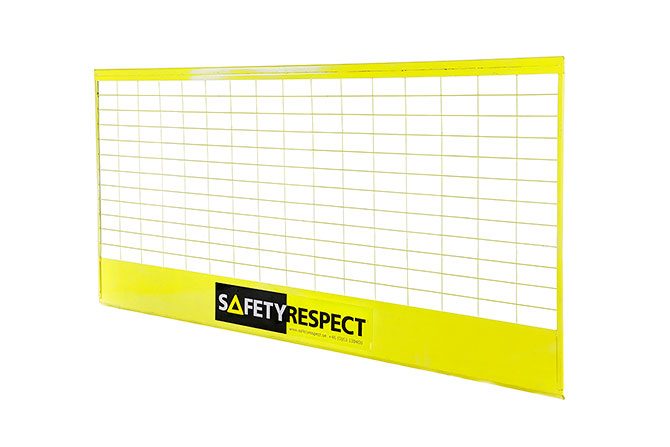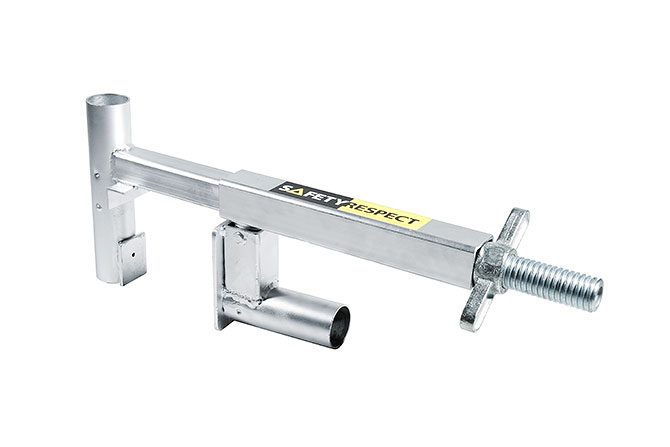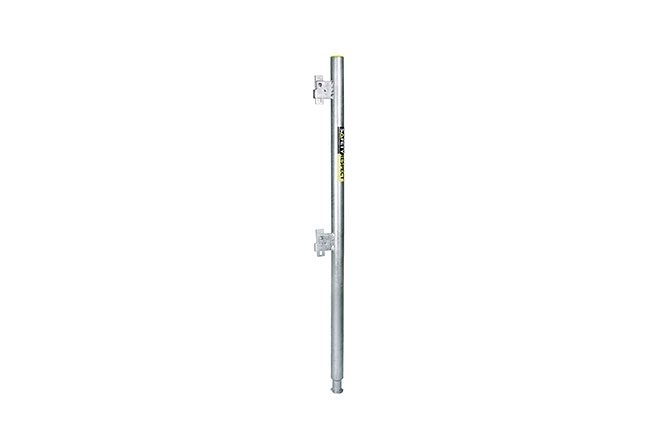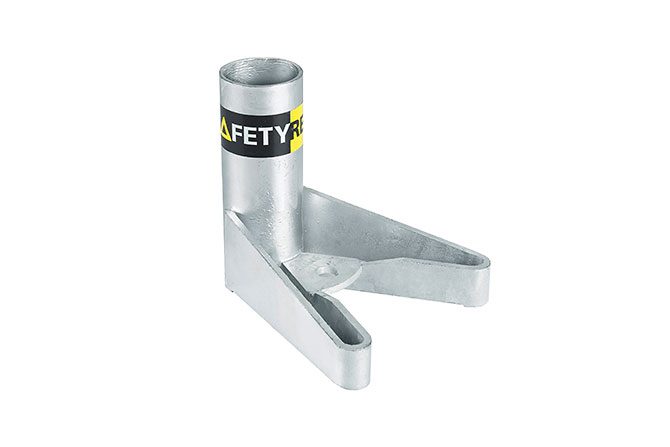January 31, 2021
GUARDRAILS: AN OVERVIEW
Guardrails, also referred to as Standard Railings and Handrails, are the primary methods to prevent employees’ access to fall hazards. OSHA regulates the standards of guardrails in the United States. These OSHA standards are in 1910.23(c) for the general industry and 1926.502 (b)-(e) for the construction industry. Keep in mind that a critical difference between the general industry and the construction industry is the trigger height, which is 4′ for the general industry and 6′ for construction. As you read this article, please keep in mind that we will focus more on construction standards.
The regulations require that a standard guardrail protects all surfaces at the respective trigger height above the adjacent floor (or ground) on all open sides. This regulation applies to the outer edge and includes loading docks, roofs, walking or working surfaces, stairways, etc. In many cases, toeboards are an additional requirement. Toeboards prevent people and materials from falling to a lower level.
The OSHA regulations state that top rails’ top edge height shall be 42 inches plus or minus 3 inches above the walking/working level. The maximum edge height may exceed the 45 inches in some conditions, provided the guardrail system meets all other criteria of this paragraph 1926.502(b). Midrails, screens, mesh, intermediate vertical members, or equivalent intermediate structural members shall be installed between the top edge of the guardrail system and the walking/working surface when there is no wall or parapet wall at least 21 inches high. Additional guidelines detail midrails, netting and panel placements, eliminating gaps and holes, and height requirements easily accessible within the OSHA standards.
It is the testing of guardrails that interests me the most. I have witnessed dozens of safety directors examine, and test, guardrails in so many different situations. Throughout my career, I have believed that the subject demands some clarity. Here is what OSHA states on the subject of testing:[/vc_column_text][/vc_column][vc_column width=”1/2″][vc_column_text]Guardrail systems shall be capable of withstanding, without failure, a force of at least 200 pounds applied within 2 inches of the top edge, in any outward or downward direction, at any point along the top edge.
When the 200-pound test load specified in paragraph (b)(3) of this section (§ 1926.502) is applied in a downward direction, the top edge of the guardrail shall not deflect to a height less than 39 inches above the walking/working level. Guardrail system components selected and constructed in accordance with appendix B to subpart M of this part will be deemed to meet this requirement.
Before we continue, I would like to highlight the sections of importance. First, “force of at least 200 pounds applied within 2 inches of the top edge” is the statement and seems simple enough. I cannot tell you how many times I have seen someone grab the top rail and push outward and downward. If it moves, does it fail? Regardless, applying force should be the first concern. Are we to believe a person using their hand is a human force gauge? I think not, but let’s not get hung up just yet because there’s more. The force applied is at least 200 pounds, and at the correct location, within two inches of the top edge (according to OSHA (1926.502(b)(4)).
When the 200 pounds test load specified in paragraph (b)(3) of this section is applied in a downward direction, the top edge of the guardrail shall not deflect to a height less than 39 inches (1.0 m) above the walking/working level. Guardrail system components selected and constructed in accordance with Appendix B to subpart M of this part will be deemed to meet this requirement.
Based on the paragraph above, a 42″ top rail cannot fall to a height of 39″ or “deflect” more than 3″. This requirement means that it could move outward more than 3″ provided it did not fall to a height below 39″. [/vc_column_text][/vc_column][/vc_row][vc_row][vc_column width=”1/2″][vc_empty_space height=”100px”][vc_column_text]There is a common practice on job sites to allow for some deflection with a reasonable amount of resistance and a return to the starting position. This return is crucial because it indicates strength and integrity. Besides our barrier systems, the guardrail I have seen most often used on job sites is 2X4 wooden handmade rails and cables. Those two options are the dominant practice from sea to shining sea. Both options will deflect- cable more so than the wood application. Of course, wooden constructed guardrails bring additional headaches like a secondary construction process with all of the risks that come with it and the need for continued inspection and maintenance.
The truth is that OSHA lacks a specific discussion of guardrails in the OSHA language. The guidelines are broad-based, open to interpretation, and there are no recommendations for certain tension levels for cable. The fact is that even if there were instructions on how to build the perfect guardrail, the time and costs of installing a system that meets the requirements without deflection is prohibitive.
Europe and several of the global general contractors have moved to barrier panel systems. Barrier panels are the most stable of guardrail options. They are durable and strong enough to resist deflection. They also include an integrated toeboard but are light enough to be moved around and installed by one person. Barrier panel systems require testing, and the testing varies from country to country. These test methods determine whether guardrails comply with standard performance requirements of the applicable specifications, codes, and standards around the world. They go beyond the 200 lbs of force outward and downward.
Whether you refer to them as guardrails or handrails, they are the preferred protection to keep workers from accessing fall hazards. The regulations, testing procedures, and manufacturing processes can vary dramatically, so it is essential to research the product you intend to use.
For questions concerning SafetyRespect Edge Protection Systems, we can be reached at [email protected].




